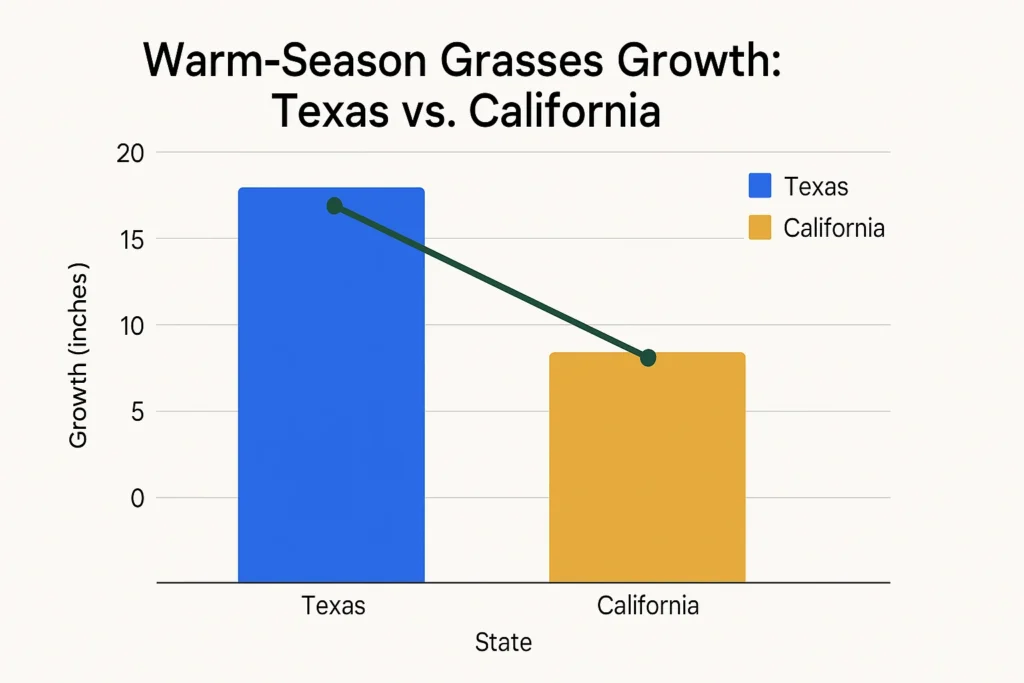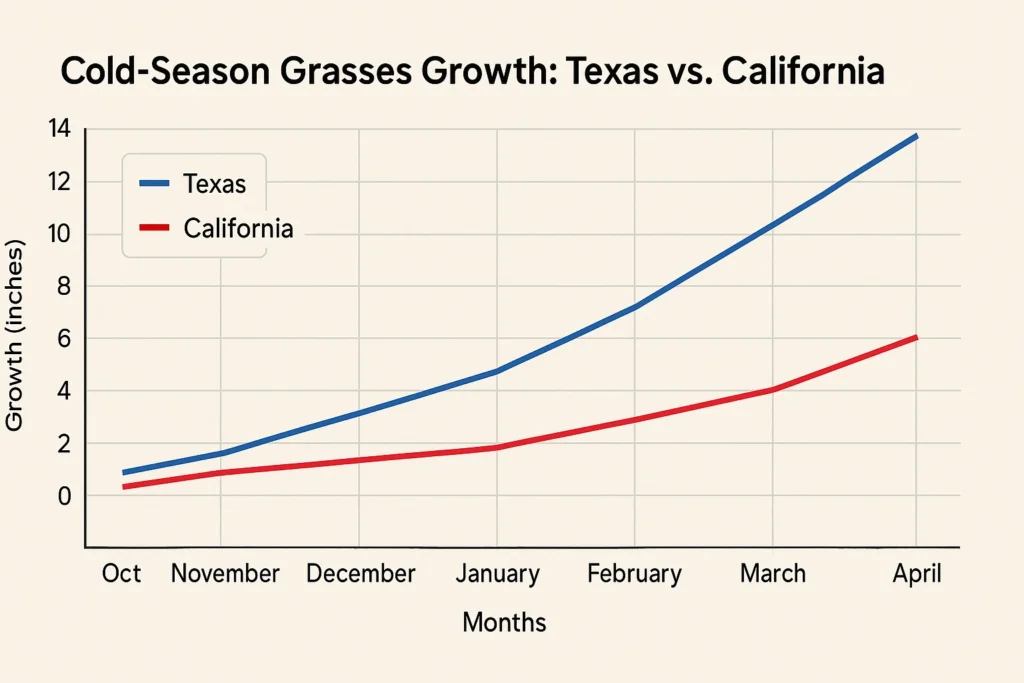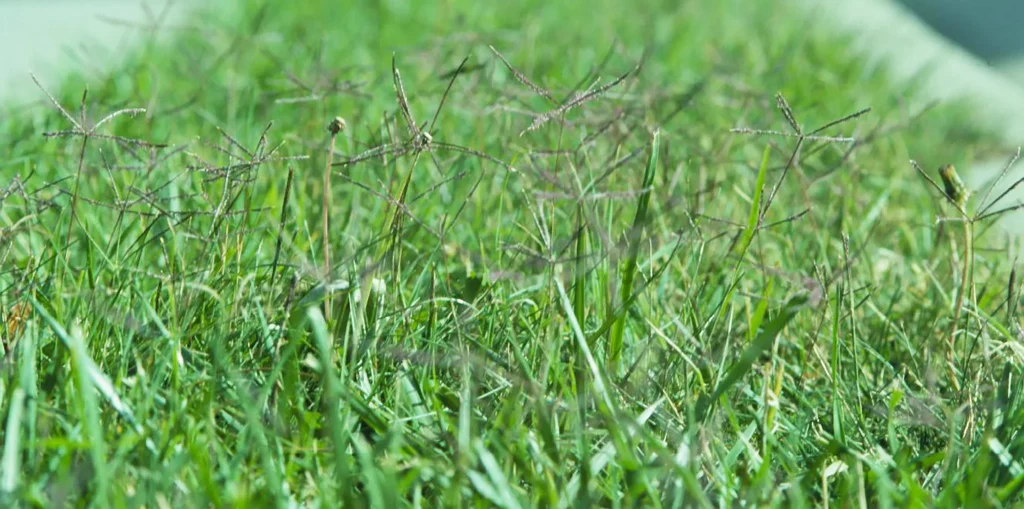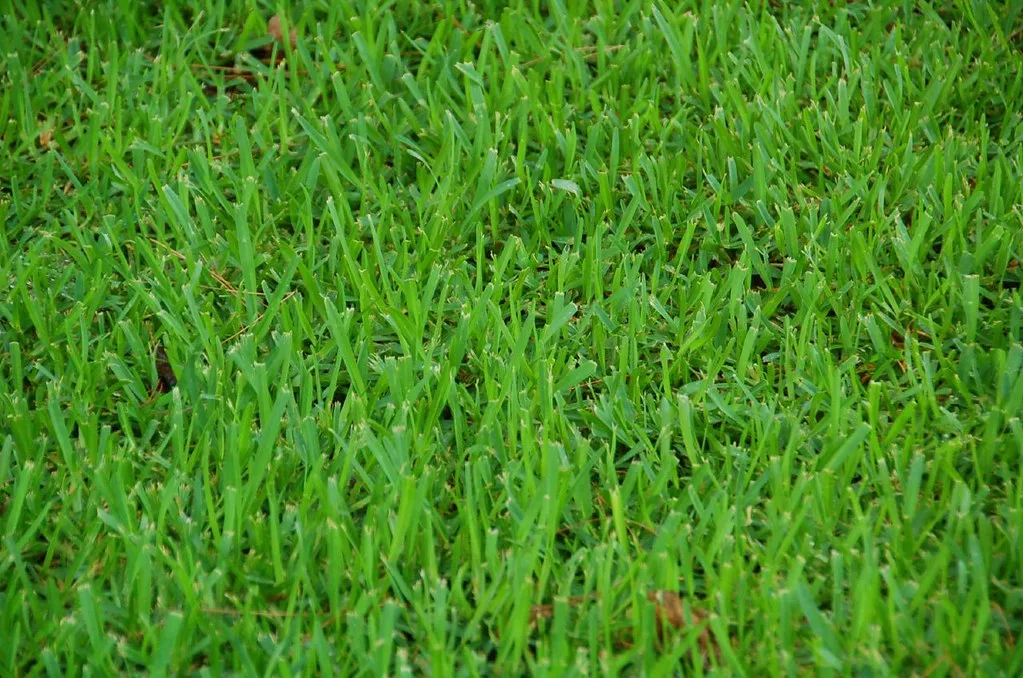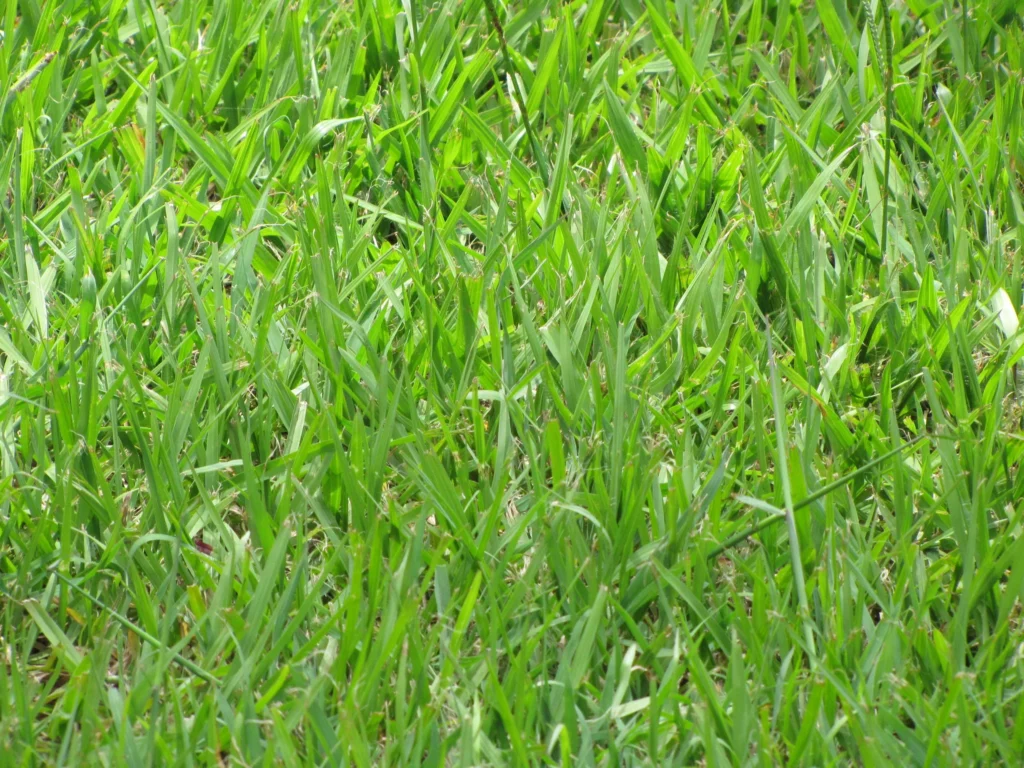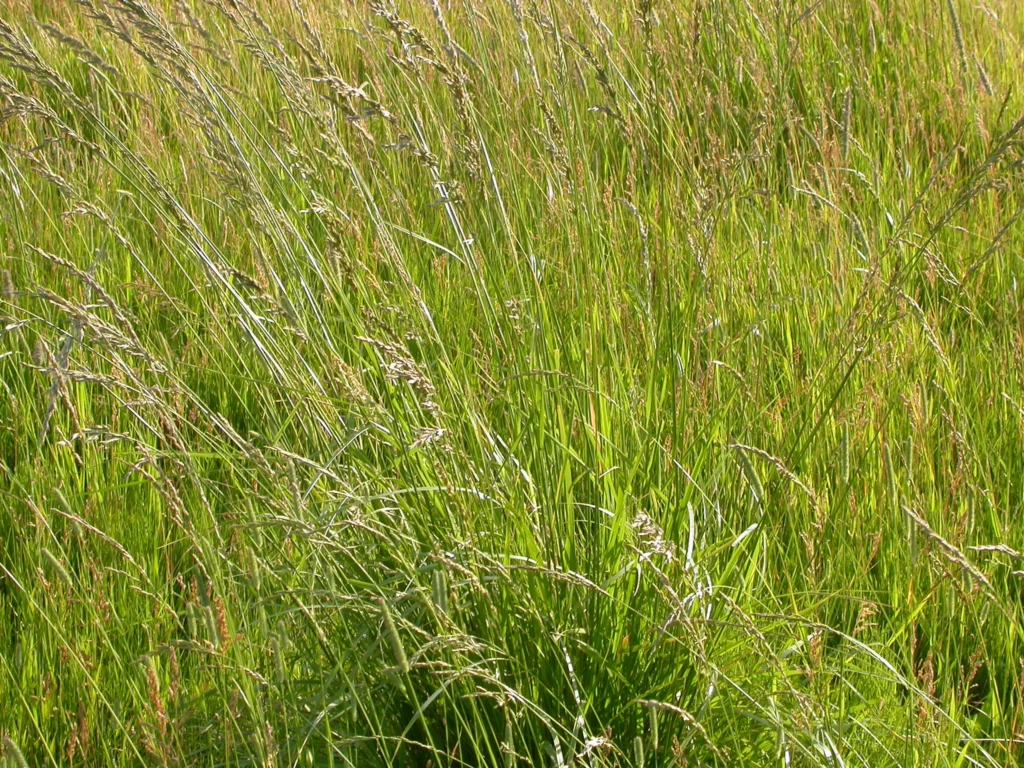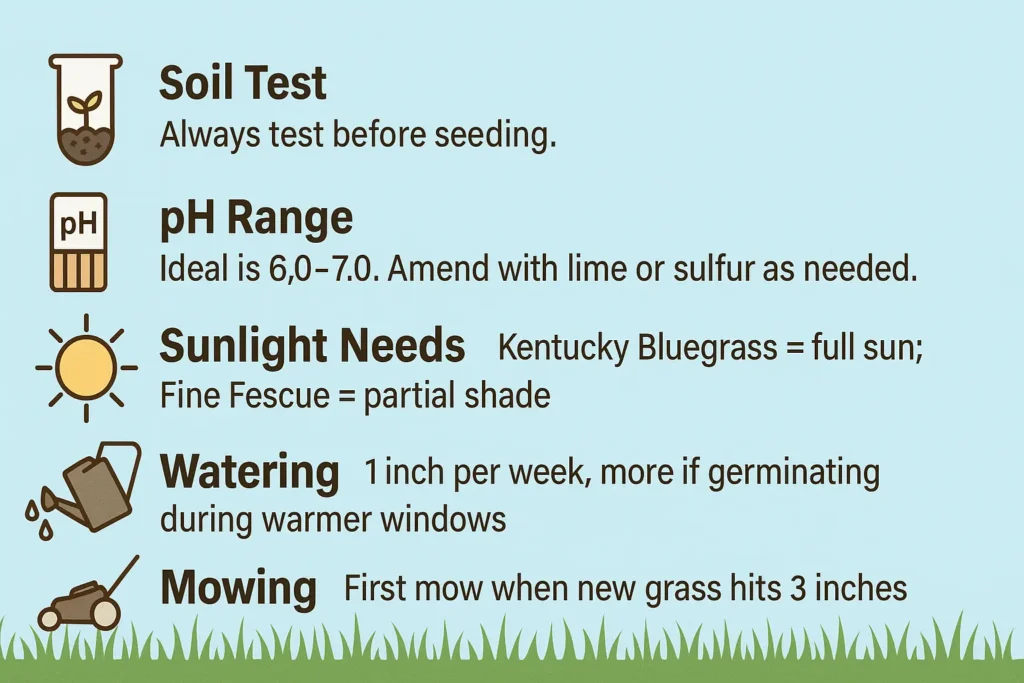When to Plant Grass Seed in Texas vs. California
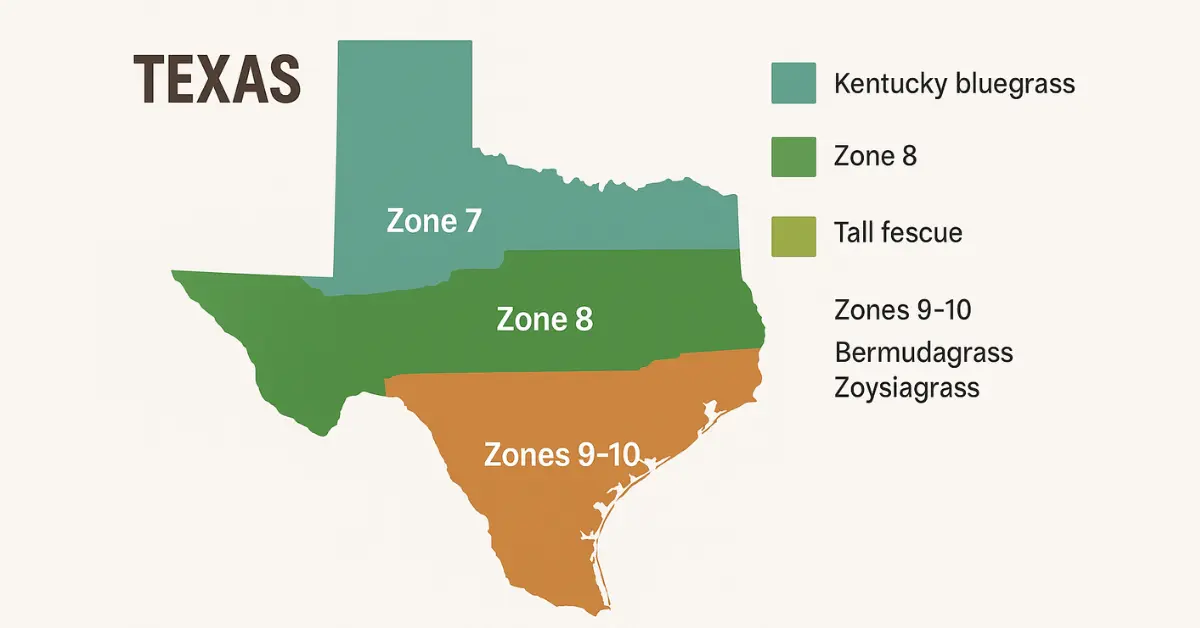
When to Plant Grass Seed in Texas vs. California? Planting grass seed sounds simple. Dig, scatter, water, wait. But here’s where many go wrong: they copy advice that doesn’t match their climate. What works for California’s gentle coastal breezes might doom your Texas lawn under its scorching sun.
If you’re asking, “When should I plant grass seed in Texas vs. California?” — you’re already ahead of the curve.
This guide clears up the confusion. You’ll learn:
- The best time to plant grass seed in Texas vs. California (it’s not always spring!)
- How climate and soil demand different approaches
- Tips that save you time, water, and frustration
- Best time to plant bermuda grass in Texas vs. California
Spoiler: There’s no one-size-fits-all. But once you understand why, you’ll never guess again.
Quick Answer for Busy Gardeners
- Texas: Late spring for warm-season grasses (April–May), fall for cool-season grasses (September–October)
- California: Early fall (September–October) is ideal for most grasses
- Why? Texas battles brutal summers, so timing is defensive. California’s Mediterranean climate favors fall planting for root establishment.
- Soil Prep & Watering: Crucial in both states, but strategies differ.
- One lawn tip never fits both — adapt or risk wasting your effort.
Table of Contents
When to Plant Grass Seed in Texas vs. California?
At first glance, both Texas and California might seem like “hot, dry states.” But the devil’s in the details.
- Texas: Think of it as three states in one—humid in the east, arid in the west, and variable in between. Summers here are relentless, with soil temps soaring past 85°F.
- California: While Southern California battles water restrictions and Mediterranean dryness, Northern California enjoys cooler, wetter winters and milder summers.
This means the window for planting grass seed varies significantly. Trying to follow a “one-size-fits-all” approach is a common mistake—especially for newcomers.
Best time to Plant Grass Seed in Texas vs. California?
In Texas, when to plant grass seed depends on the type of grass you’re aiming for:
- Cool-Season Grasses (Fescue, Ryegrass): Best planted in fall (September–November). This allows roots to establish before summer heat.
- Warm-Season Grasses (Bermudagrass, Zoysia, St. Augustine): Optimal in late spring (April–May) when soil temps hit 65–70°F.
However, some gardeners swear by early spring planting for warm-season grasses, hoping to “get ahead” of the heat. While possible, it’s risky—unexpected cold snaps can stunt growth. On the flip side, others advocate for late summer planting, gambling on an early fall cool-down. Both approaches have their supporters—and failures.
California Timing: A North-South Split
For California, when to plant grass seed hinges on your ZIP code:
- Northern California: Favors fall planting (September–October). Cooler temps and seasonal rains give seeds a solid start.
- Southern California: Also prefers fall planting, but thanks to milder winters, you can extend planting into November–December.
Curiously, some landscapers in Southern California plant cool-season grasses in winter, arguing that consistent mild temperatures offer a safer bet than erratic fall weather. Yet, this goes against traditional advice. Is it wrong? Not always. Microclimates can surprise you.
For more region-specific grass planting advice, the University of California Agriculture and Natural Resources provides detailed resources on California lawn care practices and seasonal planting guides. You can explore their recommendations here.
Warm-Season Grasses: Texas vs. California
Texas Warm-Season Grasses:
- Bermudagrass, St. Augustine, Zoysia
- Thrive in late spring to early summer planting.
- High heat tolerance but need consistent watering to establish.
California Warm-Season Grasses:
- Bermudagrass, Buffalo grass, Kikuyu (especially in Southern California)
- Planting in late spring works, but many prefer early summer when soil temps stabilize.
- Drought tolerance is key; California lawns often face stricter water use limits.
While Texas lawns can handle heavy summer rains (when they happen), California’s dry summers demand more strategic watering. Mulching and soil amendments for moisture retention are critical in California—less so in Texas, where clay-heavy soils naturally hold water longer.
Hardiness Zones in Texas (And Why They Matter)
Texas covers a massive spread of USDA Zones 6b to 9b. This impacts everything—from which seeds will thrive to how early or late you should plant.
Zone: 6b–7a
Region: Panhandle, North Texas
Grass: Tall Fescue, Kentucky Bluegrass
Zone: 7b–8a
Region: Dallas, Fort Worth, Central TX
Grass: Zoysiagrass, Bermudagrass
Zone: 8b–9b
Region: Houston, Austin, San Antonio, RGV
Grass: Bermudagrass, Buffalograss, Bahia
Why it matters: Warm-season grasses dominate Texas lawns, but north Texans may find success with cool-season types during mild falls and winters.
Not sure what zone you’re in? Use the USDA’s Plant Hardiness Zone Map.
Cool-Season Grasses: Texas vs. California
Texas Cool-Season Grasses:
- Tall Fescue, Ryegrass, Kentucky Bluegrass (limited areas)
- Plant in fall (September–November) to avoid summer stress.
- Require more maintenance in Texas’ heat, often used for seasonal lawns.
California Cool-Season Grasses:
- Fescue and Ryegrass dominate, especially in Northern California.
- Planting happens in fall (September–October) and sometimes into winter in Southern California due to mild temperatures.
- More sustainable for year-round lawns, given California’s cooler winters.
Interestingly, some Texans experiment with overseeding cool-season grasses in winter to maintain green lawns, even though it’s a temporary fix. Californians, particularly in coastal zones, can sustain cool-season grasses with less hassle.
For even more region-based timing charts, planting strategies, and zone-level seed breakdowns, explore our full guide:
👉 Best Time to Plant Grass Seed – Guide
When to Overseed in Texas (vs. California)?
Overseeding is common in Texas for winter color, especially with Ryegrass. The optimal time is early fall (late September to October), allowing seeds to establish before cold snaps.
- Texas overseeding aims to keep lawns green during dormant periods of Bermudagrass or Zoysia.
- It’s seen as a cosmetic choice—functional, but resource-intensive due to watering needs.
In California, overseeding is often more practical:
- Southern California: Overseeding in fall through early winter is routine to maintain a lush appearance.
- Water restrictions impact frequency, but overseeding remains popular for aesthetic appeal.
While Texas homeowners face high water demands for overseeding, California’s approach often involves low-water blends and mulching to offset irrigation needs.
Texas
Best Planting Time: Cool-season: Fall (Sep–Nov)
Warm-season: Late Spring (Apr–May)
Climate Challenges: Extreme summer heat, variable rainfall
Grass Types: Bermudagrass, St. Augustine, Ryegrass, Fescue
Soil Prep Tips: Prioritize aeration and organic matter
Maintenance Notes: Frequent watering essential post-planting
California
Best Planting Time: Northern CA: Fall (Sep–Oct)
Southern CA: Fall to Early Winter (Sep–Dec)
Climate Challenges: Droughts, water restrictions, microclimates
Grass Types: Fescue, Ryegrass, Bermudagrass
Soil Prep Tips: Focus on moisture retention, mulch recommended
Maintenance Notes: Adjust watering to local ordinances
The Risk of Poor Timing (and Wishful Thinking)
One might think “grass is grass” and plant whenever it’s convenient. Unfortunately, Texas’ triple-digit days and California’s water limitations don’t play nice with such optimism.
Misjudging when to plant grass seed in Texas vs. California often leads to:
- Seeds drying out before germination.
- Fungal issues from overly wet winters.
- Seedlings frying under unexpected heat waves.
It’s frustrating—but preventable with the right timing.
When to Plant Bermuda Grass Seed in Texas vs. California
Bermuda grass is a favorite for its toughness, drought tolerance, and beautiful green carpet effect. But getting it to thrive starts with one simple question: when to plant Bermuda grass seed in Texas vs. California?
Best time to plant bermuda Grass in Texas
In Texas, the best time to plant Bermuda grass seed is late spring (April to May). By this time, soil temperatures consistently reach 65–70°F — the sweet spot for germination.
Why not earlier?
Early spring might tempt you with mild days, but the soil often remains too cold for Bermuda seed to sprout effectively. Planting too soon risks slow or patchy germination. On the other hand, waiting too late pushes you into Texas’ brutal summer, where seedlings can scorch under relentless heat.
A common homeowner mistake?
Planting in mid-summer hoping irrigation will compensate. Unfortunately, Bermuda seedlings struggle to establish roots under triple-digit temperatures, making late spring the safer bet.
Best time to plant bermuda Grass in California
In California, the question of when to plant Bermuda grass seed depends on your region:
- Southern California:
Best planted from late spring into early summer (April–June). Mild coastal climates allow a wider window, and Bermuda’s heat tolerance fits well with Southern California’s dry summers. - Northern California:
Slightly more cautious. Planting is typically done in late spring (April–May), similar to Texas, but growers often push into early June if soil temps are lagging behind.
Unlike Texas, California’s summer heat is less severe (in most areas), giving Bermuda grass a better chance to establish even in early summer. However, drought and water restrictions complicate things. Many Californian homeowners opt for Bermuda grass hybrids or drought-tolerant varieties that require less frequent watering.
Best Grass Types for Texas Lawns (With Regional Notes)
Let’s get to the point—what should you plant?
Bermudagrass
A Texas staple. Loves full sun, heat, and drought. Germinates quickly and spreads fast—ideal for athletic fields and active lawns. Best for zones 7–9.
Zoysiagrass
Thicker, denser, and more shade-tolerant than Bermuda. Slower to establish but extremely durable once rooted. Works great in zone 8 and parts of 9.
Buffalograss
Native, low-maintenance, and drought-tolerant. Perfect for eco-conscious homeowners in west and central Texas. Doesn’t need mowing often.
Bahiagrass
Great for sandy, poor soils (e.g., East Texas). Tough but not very lush. Often used in rural or roadside settings.
Tall Fescue (North Texas only)
If you’re near Amarillo or Wichita Falls, this cool-season grass gives you year-round green when warm-season types go dormant.
So if you’re deciding when to plant grass seed in Texas, choosing the right grass for your zone is just as important as timing.
Soil, Sun, and Water: Texas-Specific Tips
Knowing when to plant grass seed in Texas is step one—step two is prepping the soil and environment to give that seed a fighting chance.
- Soil Prep: Till and loosen 2–3 inches of topsoil. In clay-heavy areas (Central TX), amend with compost or sand.
- pH Range: Ideal pH is 6.0–7.0. Sandy East TX soil may need lime.
- Sunlight: Bermuda = full sun; Zoysia = sun to partial shade
- Watering: Water daily after seeding, then taper to 1″ per week.
- Fertilizer: Apply a starter mix high in phosphorus before seeding.
Avoid overwatering—it leads to fungus. Underwatering dries out tender sprouts. Balance is everything.
Texas
- Best Planting Time: Late Spring (April–May)
- Climate Challenges: Intense summer heat, erratic rainfalls
- Common Mistakes: Planting too early or mid-summer
- Water Needs: Heavy watering post-planting
California
- Best Planting Time: Southern CA: April–June
Northern CA: April–early June - Climate Challenges: Drought restrictions, microclimates
- Common Mistakes: Over-relying on irrigation in drought areas
- Water Needs: Strategic watering due to restrictions
Pro Tip:
In both states, always monitor soil temperature — not just air temperature. Bermuda seeds won’t germinate well below 65°F, no matter how nice the weather feels. Using a simple soil thermometer can save weeks of frustration.
Tool Recommendation
🧮 Need help estimating how much seed you’ll need?
Try our Grass Seed Calculator to avoid under- or over-seeding.
- ✅ Lawn Fertilizer Calculator – Apply the right amount of nutrients based on lawn size and grass type
- ✅ Lawn Mowing Cost Calculator – Estimate mowing expenses by lawn size, frequency, and contractor pricing
- ✅ Lawn Care Cost Calculator – Budget for overseeding, watering, fertilizing, and more
FAQ: Common Questions Answered
❓ Can I plant grass seed in Texas during summer?
A: Technically, yes—but it’s not recommended. The extreme heat and lack of consistent rainfall make summer planting a gamble. Warm-season grasses need soil temps around 65–70°F for best results, which is hard to manage mid-summer.
❓ Is winter a good time to plant grass seed in California?
A: In Northern California, winter is too cold for effective seeding. However, Southern California’s mild winters allow for late-season planting of cool-season grasses. It’s a regional nuance that often confuses homeowners.
❓ How do soil temperatures affect grass seed planting?
A: Grass seed germination depends more on soil temperature than air temperature. Aim for 50–65°F for cool-season grasses and 65–70°F for warm-season varieties. This applies to both Texas and California, though soil warms faster in Texas.
Conclusion: Timing Isn’t Optional—It’s Critical
Understanding when to plant grass seed in Texas vs. California isn’t just gardening trivia. It’s the difference between a thriving lawn and wasted weekends. Texas demands careful attention to heat and rainfall patterns, while California challenges you with drought and microclimates.
There’s room for experimentation, sure—but ignoring regional nuances often leads to disappointment.
Next Steps:
Before you grab a seed bag, check your soil temperature, local climate trends, and grass type recommendations. And for precision, use our [Grass Seed Calculator] to get your lawn off to the best start.

